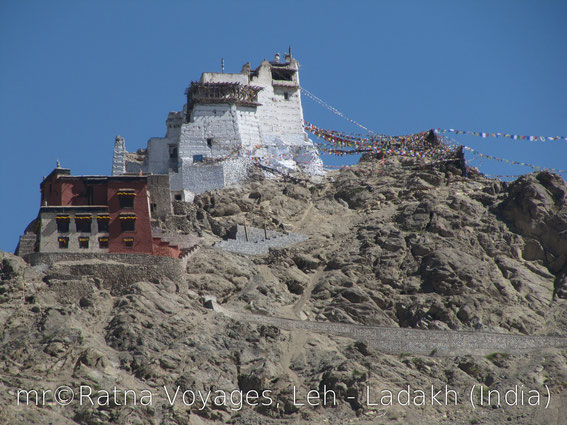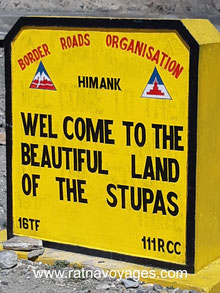LEH PALACE AND NAMGYAL TSEMO GOMPA, LEH - LADAKH

|
NAME/NOM/ NAME/NOME |
LEH PALACE LEHCHAN PALKHAR |
|
|
LOCATION/LIEU/ ORT/LUOGO |
Leh | |
|
FOUNDED/FONDÉ/ GEGRÜNDET/FONDATO |
16th Century | |
|
|
||
|
FOUNDER/FONDEUR/ GRÜNDER/FONDATORE |
Lama Staksang Raspa and sponsored by King Sengge Namgyal | |
| FESTIVAL | Dosmochey | |
| FESTIVAL 2024 | February , 2024 |
Leh Palace
Leh Palace and Namgyal Tsemo Monastery, also known as Namgyal Tsemo Gompa, are significant historical and cultural landmarks in Ladakh. Here is a detailed history of each:
Leh Palace - Construction:
Leh Palace is a grand structure located in Leh, the capital of Ladakh.
It was built by King Sengge Namgyal in the 17th century, between 1553 and 1620.
Leh Palace - Architectural Features:
The palace is an imposing nine-story structure, and it is a fine example of medieval Tibetan architecture.
It resembles the Potala Palace in Lhasa, Tibet, and reflects the influence of Tibetan architecture in the region.
The palace is made of stones, wood, mud bricks, and sand, providing it with both strength and insulation.
Leh Palace - Historical Significance:
Leh Palace served as the royal residence for the Namgyal dynasty of Ladakh. The royal family abandoned the palace in the mid-19th century, moving to Stok Palace.
Leh Palace - Architecture and Restoration:
The palace fell into a state of disrepair over the years.
The Archaeological Survey of India (ASI) has been involved in the restoration and maintenance of Leh Palace, preserving its historical and
architectural significance.
|
NAME/NOM/ NAME/NOME |
NAMGYAL TSEMO GOMPA | |
|
|
||
|
LOCATION/LIEU/ ORT/LUOGO |
Leh | |
|
|
||
|
FOUNDED/FONDÉ/ GEGRÜNDET/FONDATO |
1430 |
|
|
|
||
|
FOUNDER/FONDEUR/ GRÜNDER/FONDATORE |
King Tashi Namgyal | |
|
|
||
|
PROTECTOR/PROTECTEUR/ SCHIRMHERR/PROTETTORE |
Palden Lhamo |
Namgyal Tsemo Monastery:
Construction:
Namgyal Tsemo Monastery, also known as Namgyal Tsemo Gompa, is located atop a hill near Leh Palace.
It was founded by King Tashi Namgyal in the early 16th century.
Namgyal Tsemo Monastery - Spiritual Significance:
The monastery is dedicated to Avalokiteshvara, the Buddha of Compassion.
It houses a three-story-high gold statue of Maitreya Buddha (future Buddha)
Namgyal Tsemo Monastery - Architectural Features:
The monastery consists of a central prayer hall surrounded by murals, statues, and scriptures.
It offers panoramic views of Leh and the surrounding mountains.
Namgyal Tsemo Monastery - Historical Events:
Namgyal Tsemo Monastery played a strategic role in the defense of Leh against invasions.
Namgyal Tsemo Monastery - Festivals:
The monastery is an active center of Buddhist worship, especially during festivals like Dosmoche and Gustor.
Both Leh Palace and Namgyal Tsemo Monastery stand as testaments to the rich cultural and historical heritage of Ladakh, attracting visitors and pilgrims from around the world.






































